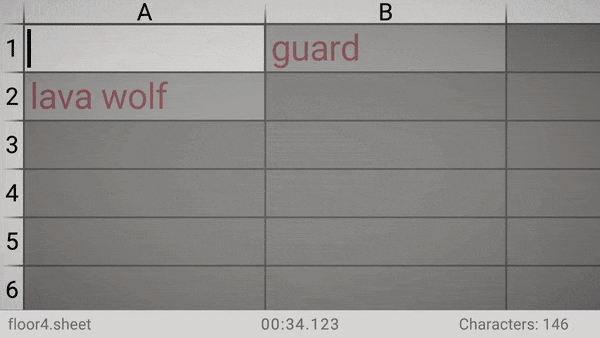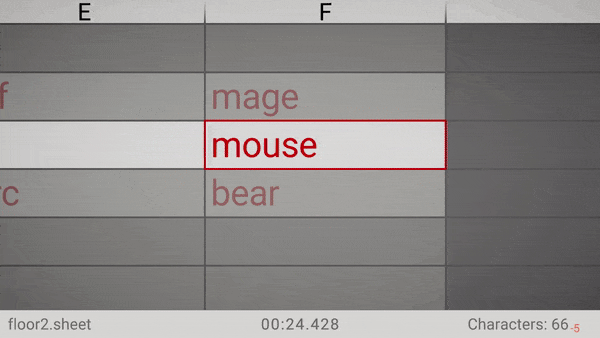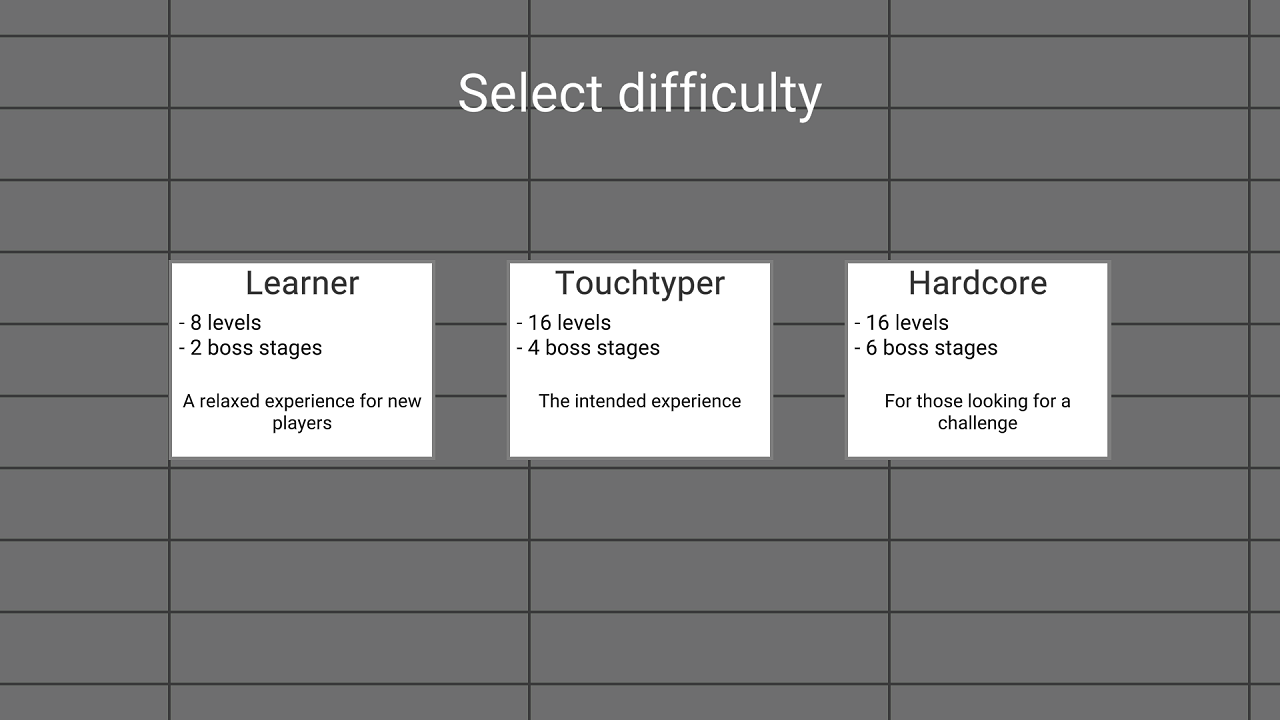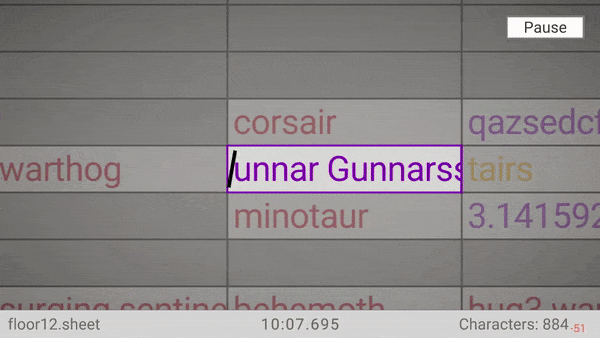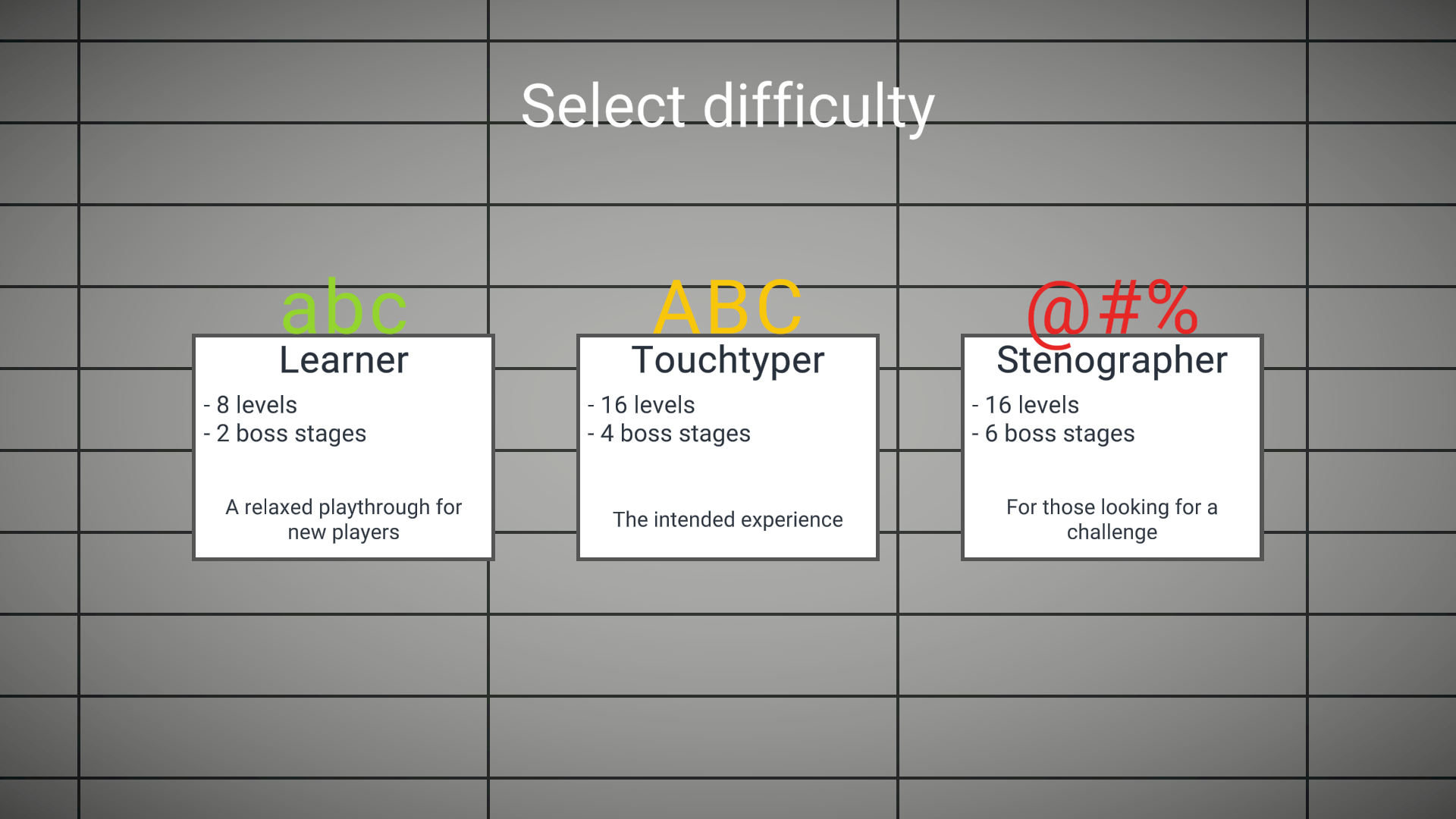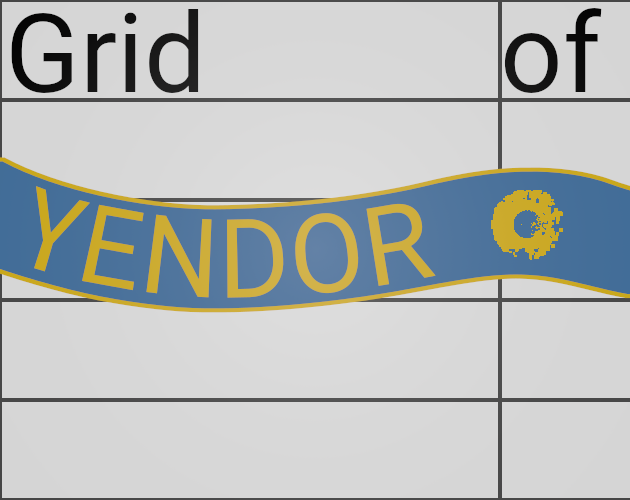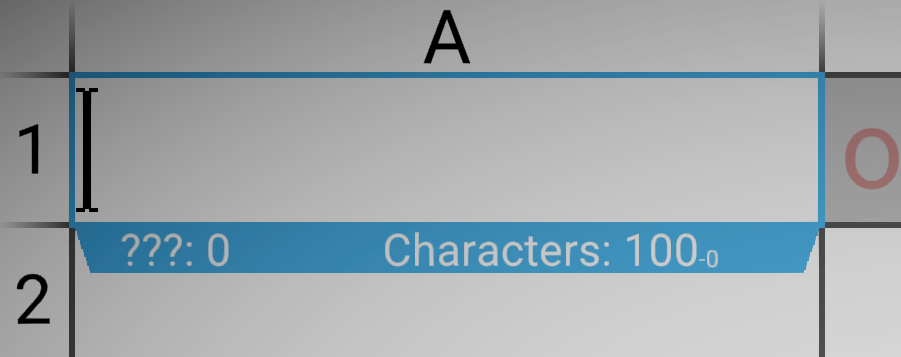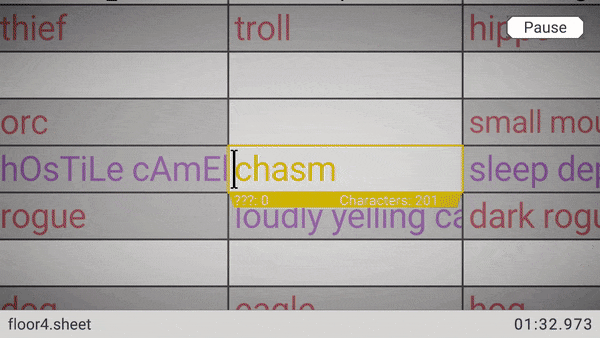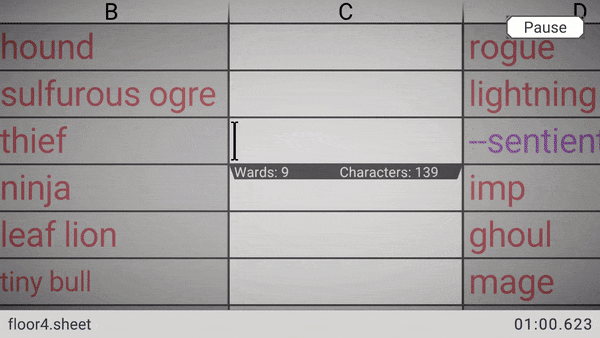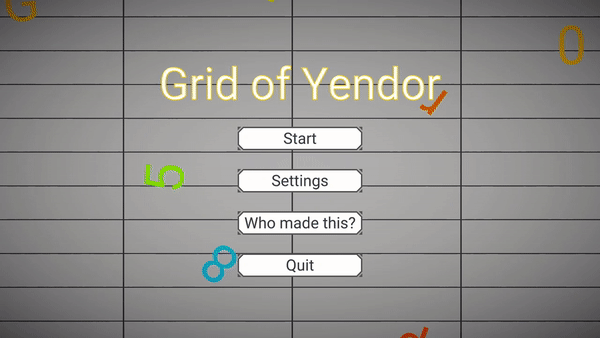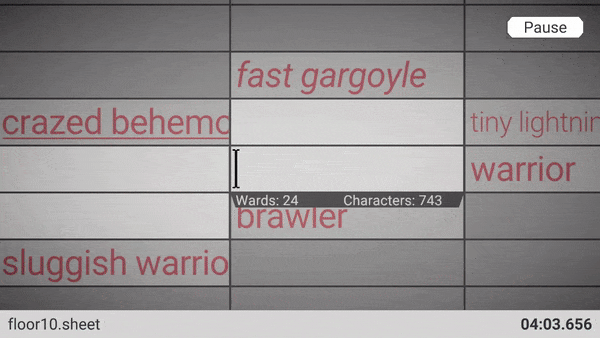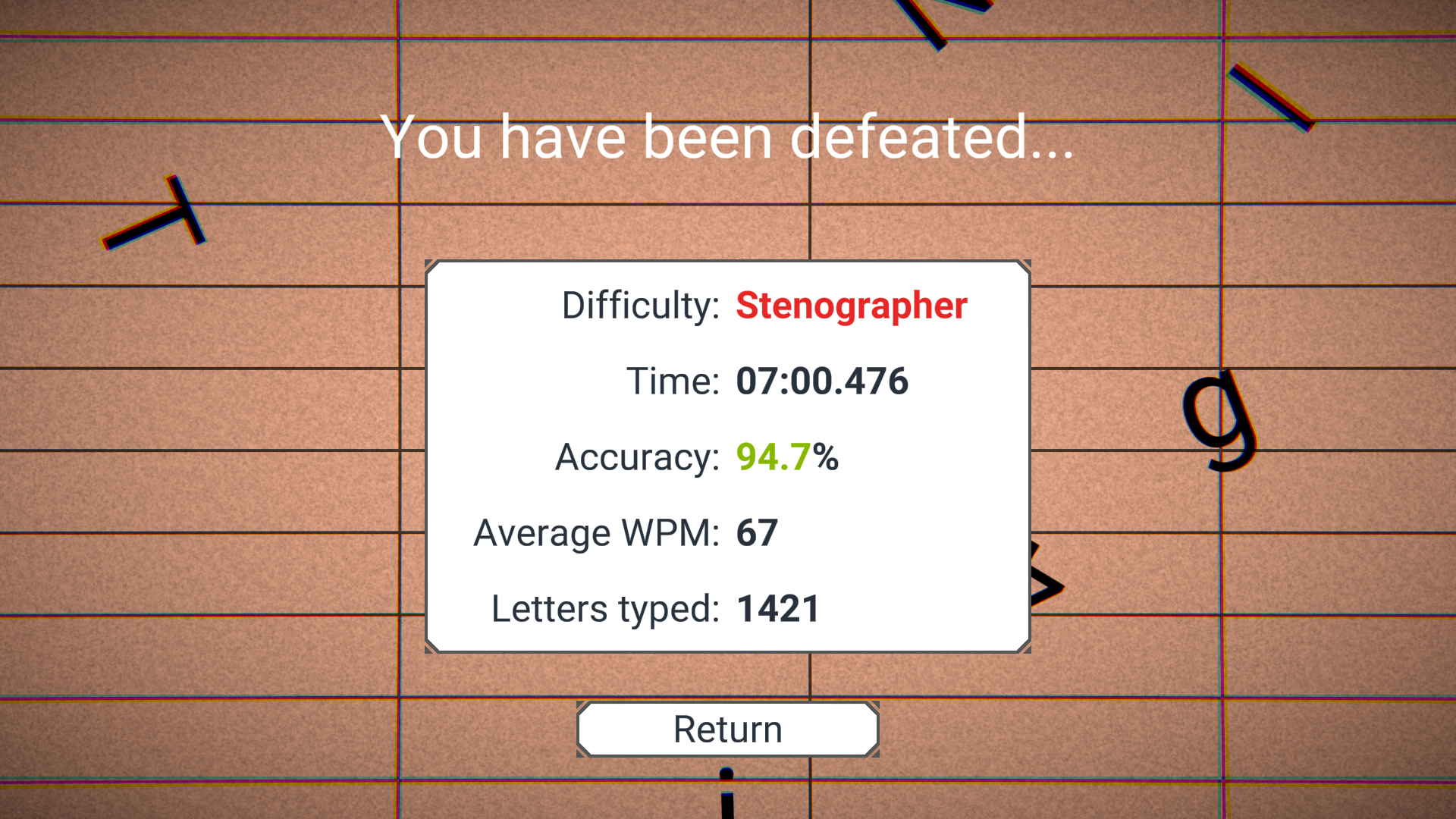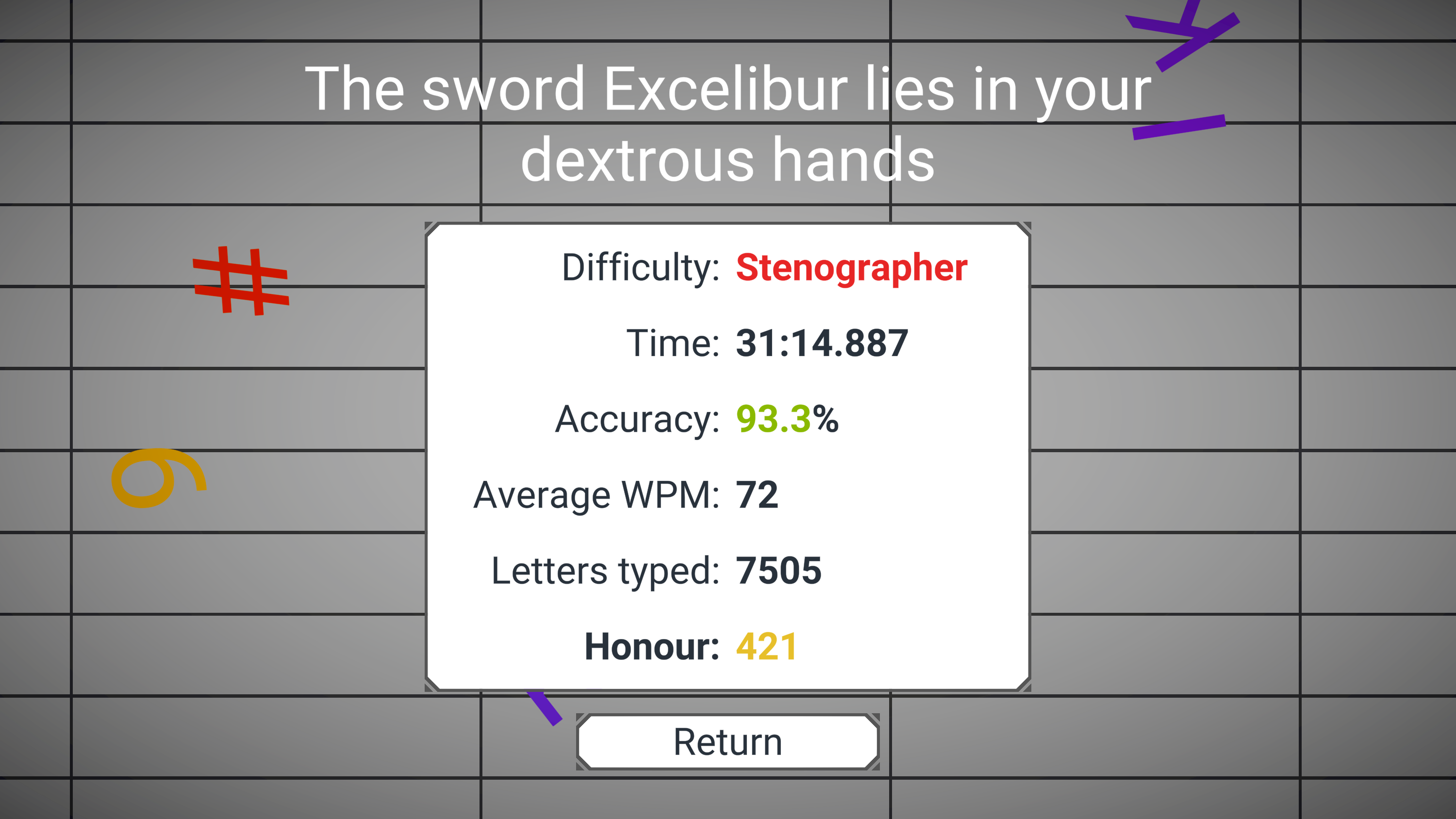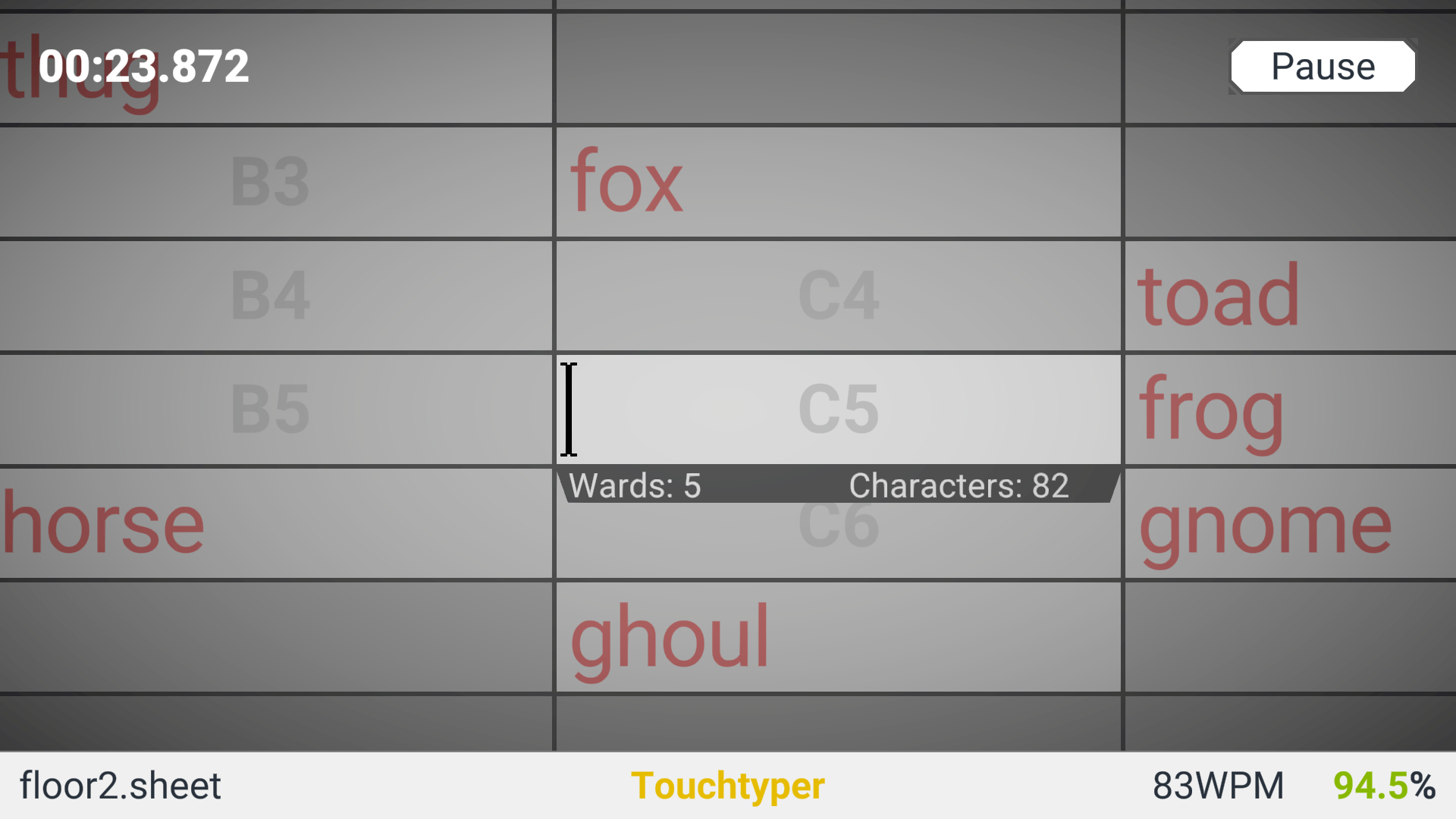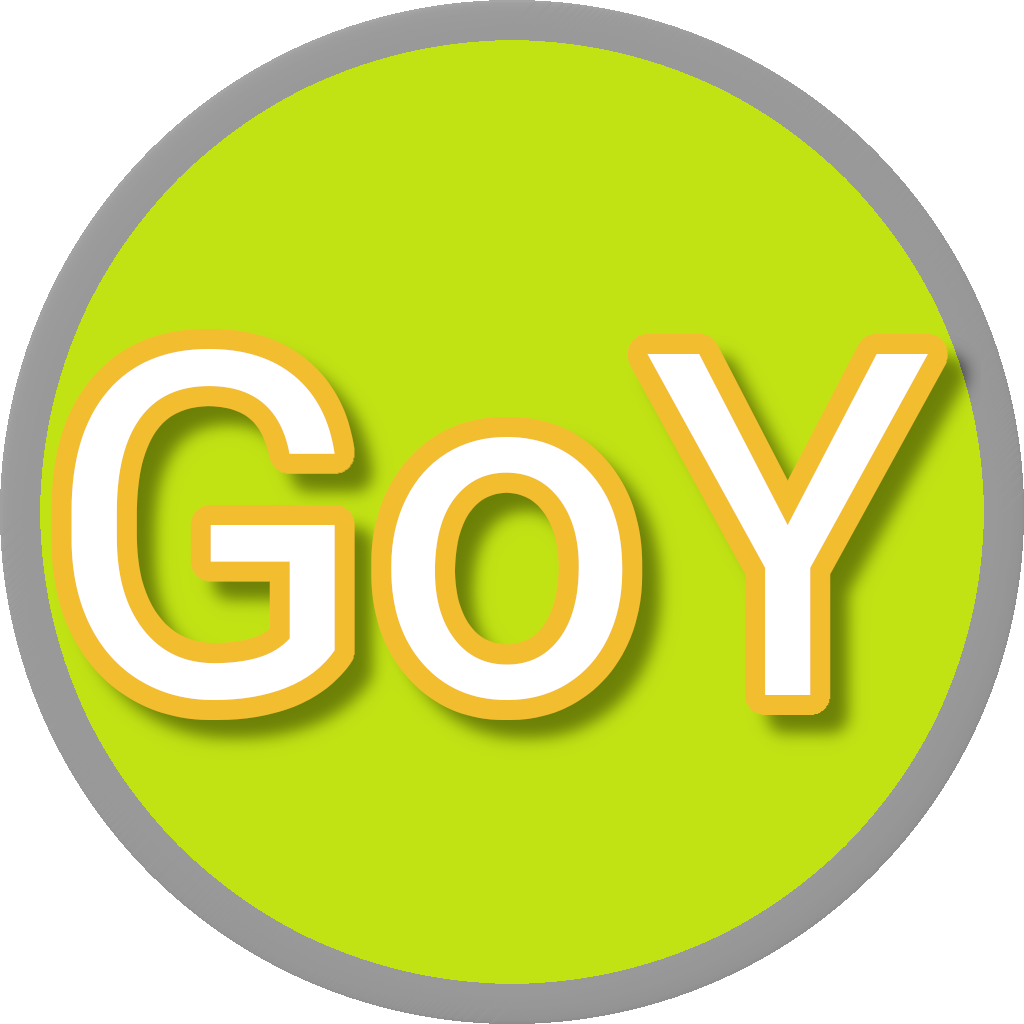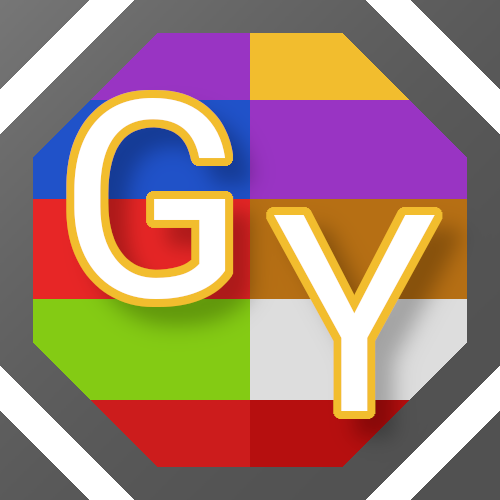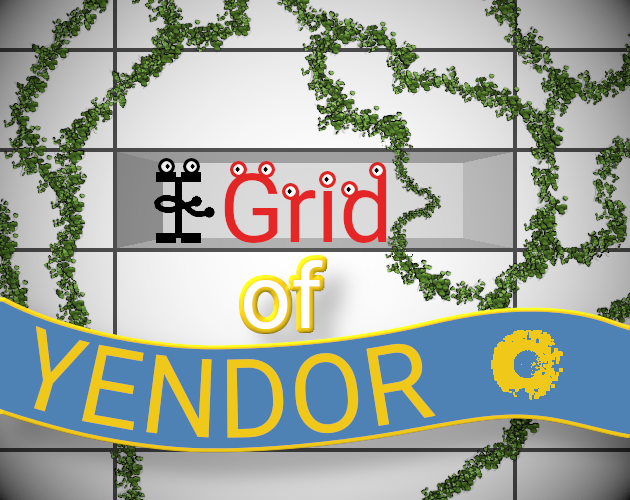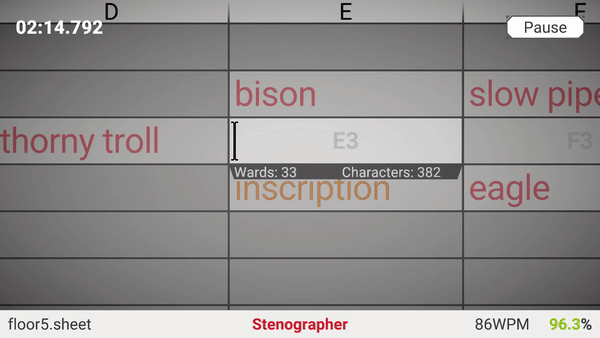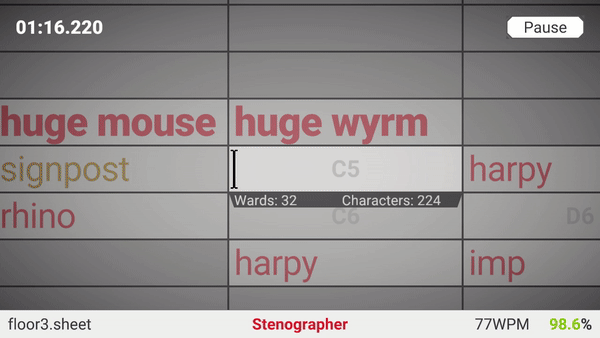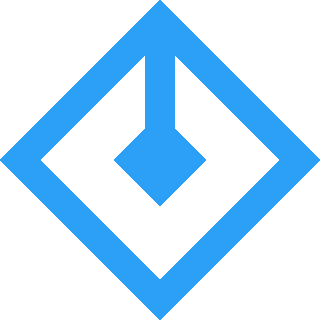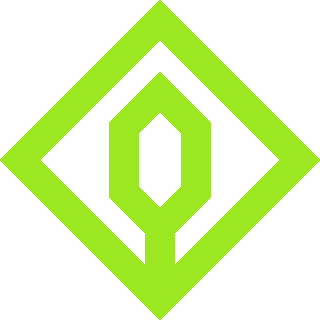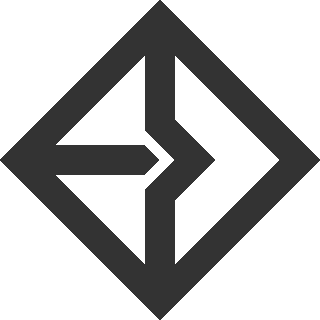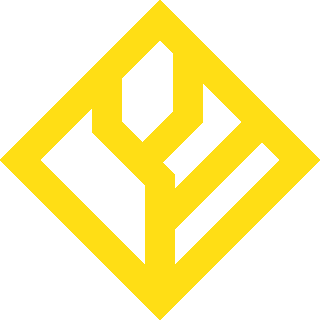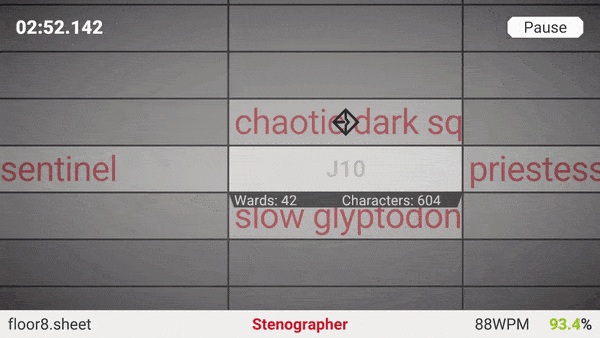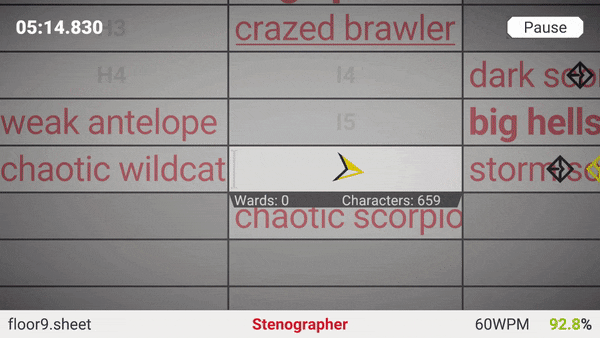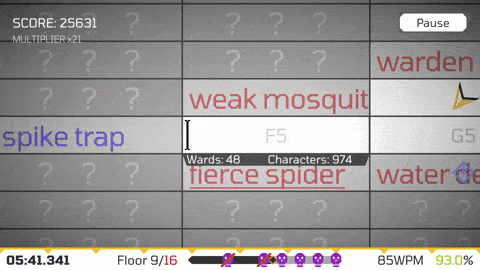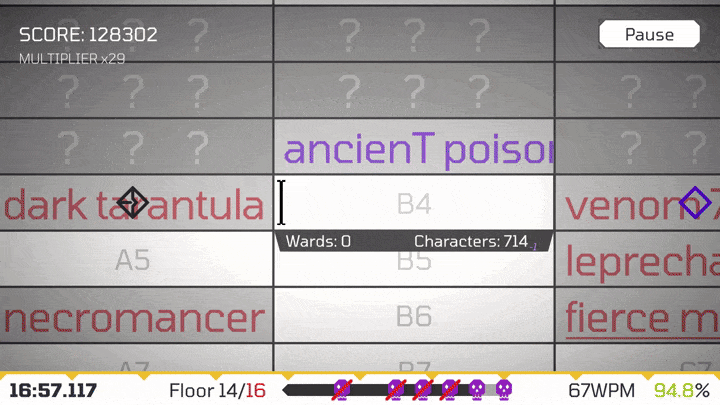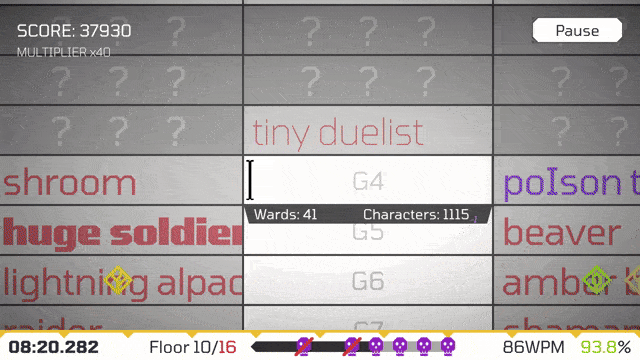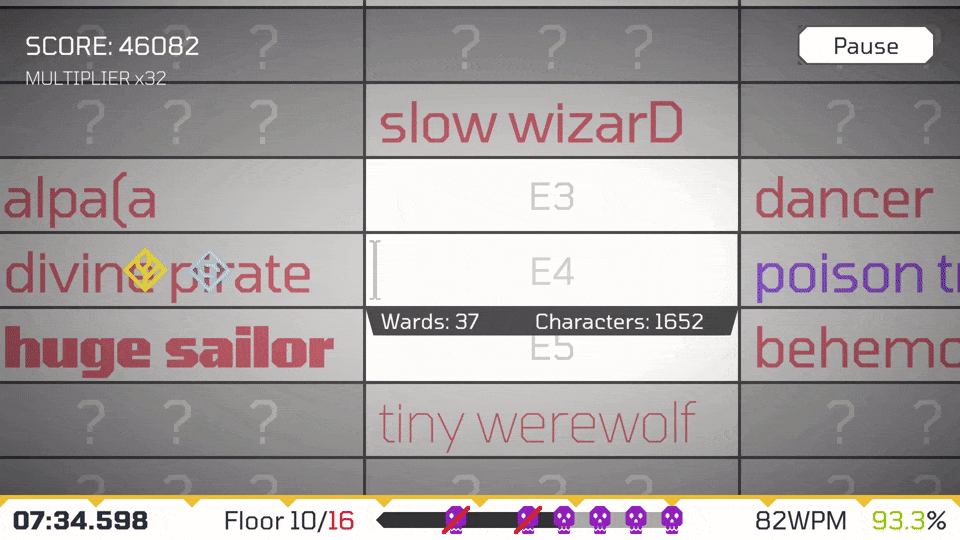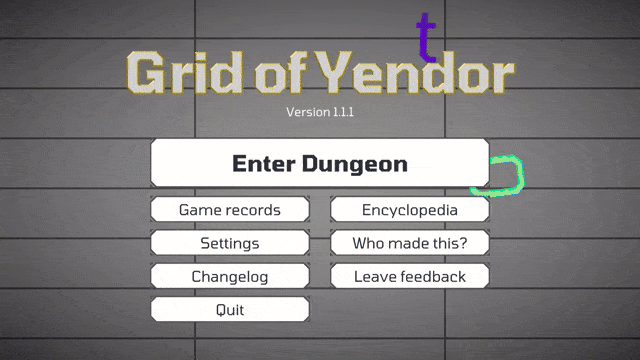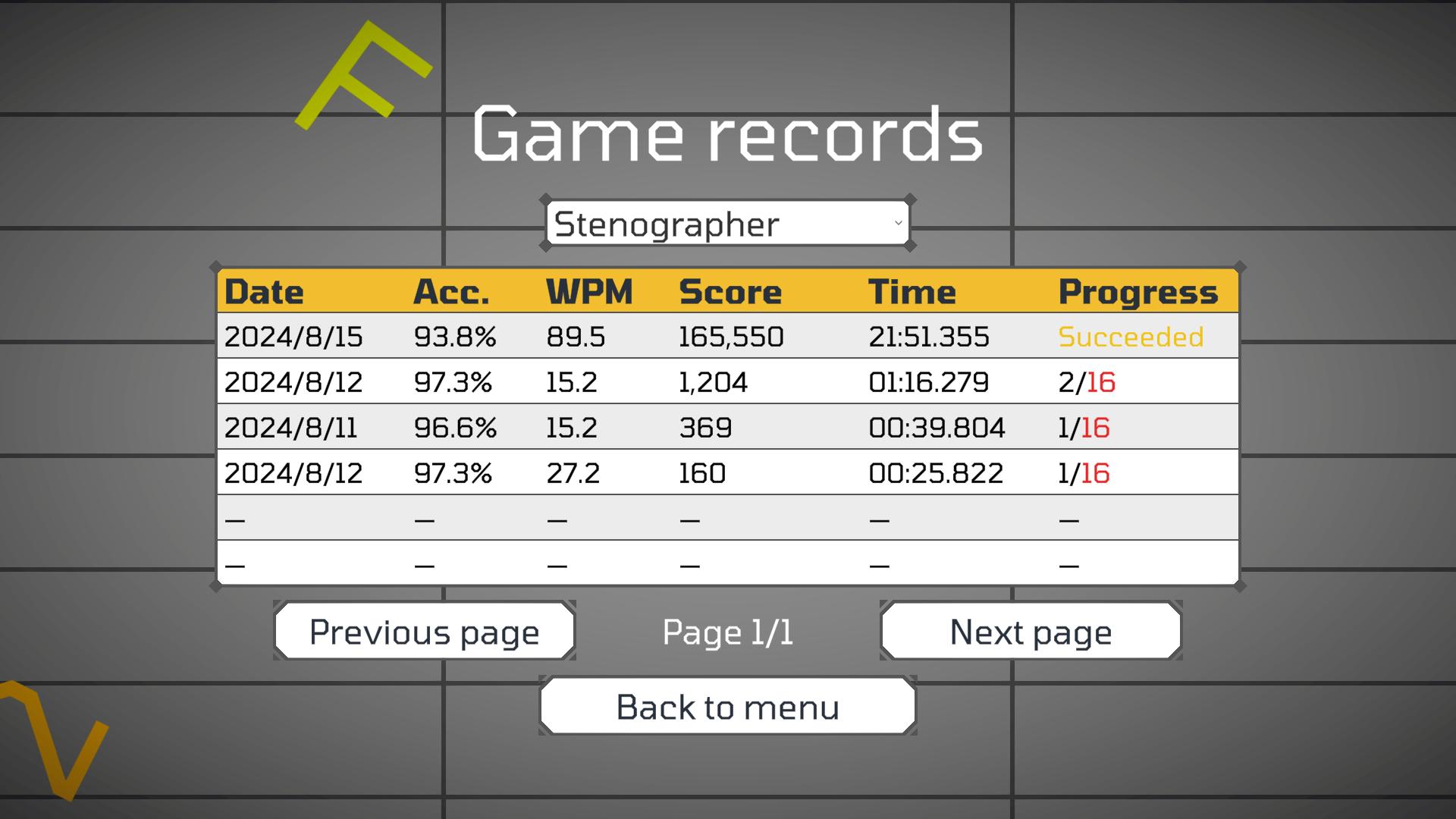This is a minimalistic roguelike set on a spreadsheet where typing attacks your enemy and heals you at the same time. It was my entry in the gamedev.tv jam, and ranked #32 in mechanics and fun out of 1000 entries. Since it received a lot of positive comments, I've decided to keep working on it, unlike my other jam games.
Features already in-game:
- Brief introduction/tutorial via dialogue
- 16 levels of increasing difficulty
- Win and lose screens
- Basic timer
- Enemies which attack every second. Their length and number of "special" characters determine their damage.
Features I'm aiming for in the release:
- Multiple difficulties (Implemented)
- Better level generation (Implemented)
- Better UI/UX design (Implemented)
- A more fleshed-out story (Implemented)
- Highscores/savegames (Maybe)
Play here: drhippo.itch.io/grid-of-yendor
I've already made some QoL fixes, but I want to integrate the game with git and butler and do some refactoring before I add any content.
Here are some screenshots:
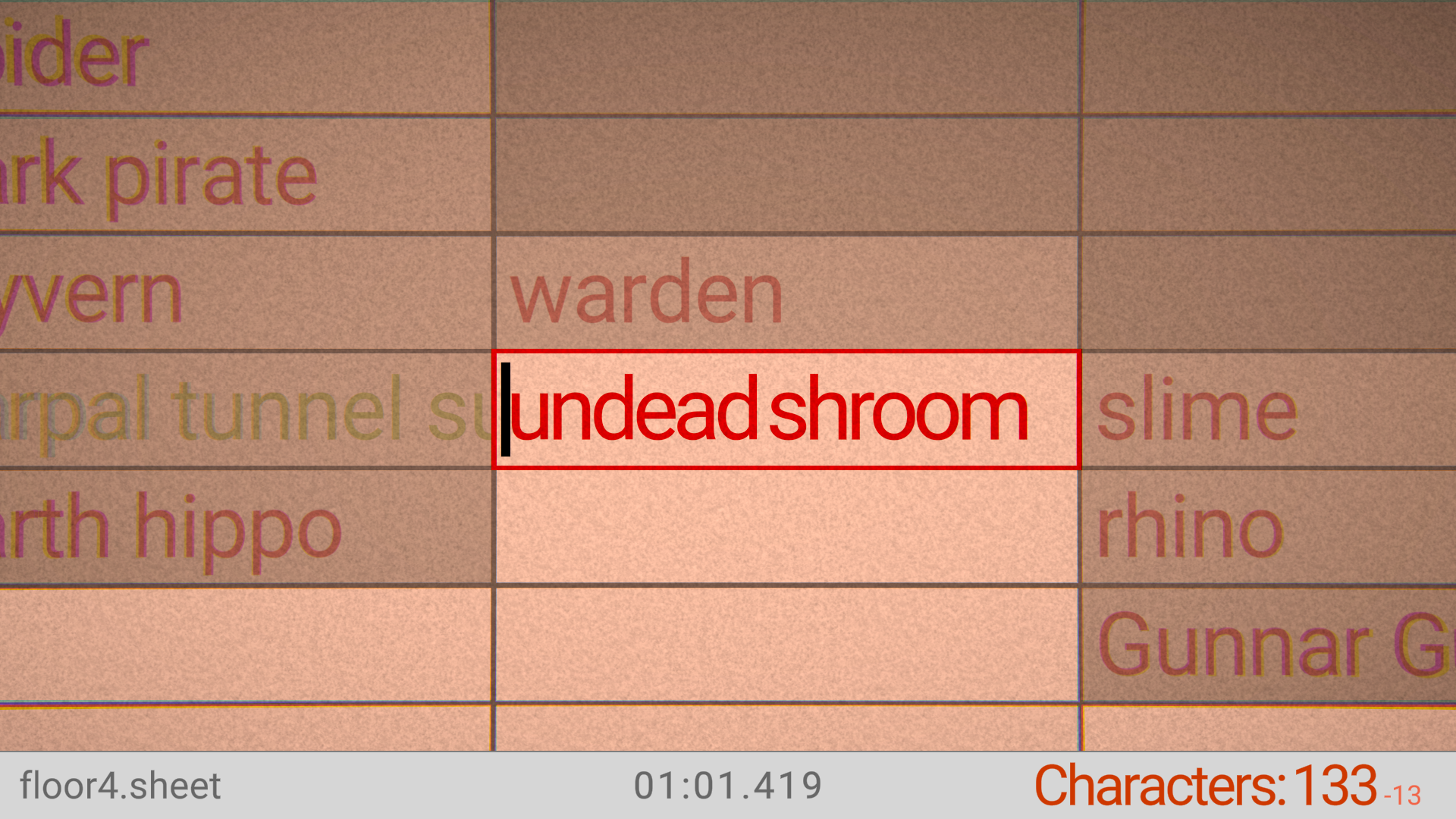
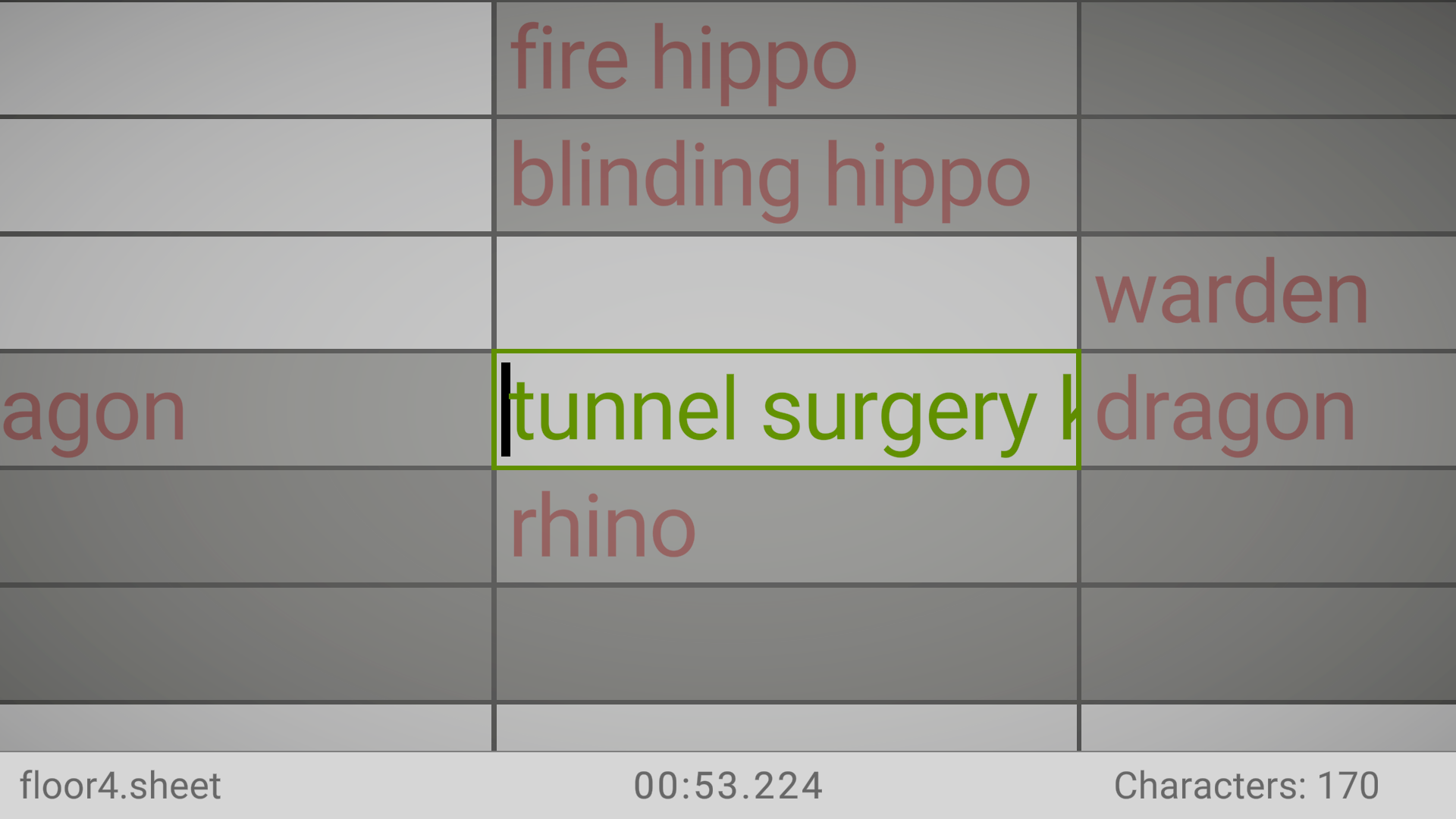
Thanks for reading and I hope you have a great day.




